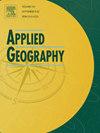Knowledge sourcing by multi-locational firms in Chinese cities: Mining and integrating local knowledge stocks in private and state-owned firms
IF 4
2区 地球科学
Q1 GEOGRAPHY
引用次数: 0
Abstract
A linked firm-patent dataset is generated for a sample of approximately 400 domestic, multi-locational firms operating in China over the period 2001-15. Analysis focuses on the character of technologies produced within the different R&D plants of these firms. We show that most multi-unit firms produce different kinds of knowledge within their R&D units and that the likelihood of technology differences increases with the number of R&D plants within each firm. Evidence of a geography of knowledge sourcing is presented that rests on the technological similarity between the patents produced within a firm's R&D plants and those produced in the cities where those plants are located. We also find that the average complexity of patents generated by firms is positively related to the number of R&D units that they operate. That these benefits emerge for multi-locational firms operating within a single country suggests that the constraints on knowledge diffusion operate at a relatively disaggregate spatial scale. Finally, our results indicate that collaboration between headquarters and non-headquarters R&D units within firms has a differential impact on the complexity of knowledge produced and that state versus private ownership of firms influences the nature and impact of intra-firm collaboration.
求助全文
约1分钟内获得全文
求助全文
来源期刊

Applied Geography
GEOGRAPHY-
CiteScore
8.00
自引率
2.00%
发文量
134
期刊介绍:
Applied Geography is a journal devoted to the publication of research which utilizes geographic approaches (human, physical, nature-society and GIScience) to resolve human problems that have a spatial dimension. These problems may be related to the assessment, management and allocation of the world physical and/or human resources. The underlying rationale of the journal is that only through a clear understanding of the relevant societal, physical, and coupled natural-humans systems can we resolve such problems. Papers are invited on any theme involving the application of geographical theory and methodology in the resolution of human problems.
 求助内容:
求助内容: 应助结果提醒方式:
应助结果提醒方式:


